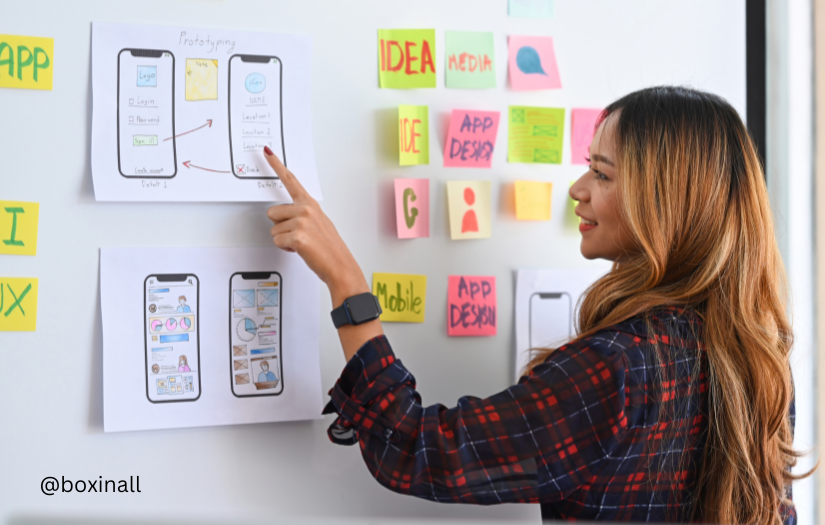In the fast-paced world of mobile app development, staying ahead of the competition requires not only innovative ideas but also efficient execution. This is where mobile app prototyping comes into play. Mobile app prototyping is the process of creating a tangible representation of your idea before it becomes a full-fledged product. It serves as a powerful tool for research, budget planning, collaboration, and pitching to investors. In this article, we will explore the important role of app prototyping, the steps to create a mobile app prototype, and the significance of UI/UX design in the process.
The Important Role of App Prototyping
Mobile app prototypes are more than just simple or basic representations of an app. They provide users with an immersive experience, showcasing how the app’s features actually work. By demonstrating the functional and visual elements of the app, you can help potential investors and team members understand its capabilities and features. Additionally, app prototypes allow you to gather valuable feedback that can be used to improve the app. This iterative process ensures that you can focus on the most important aspects of your app and make the most out of your available resources.

Steps to Create a Mobile App Prototype
1. Ignite Your App’s Spark
Every successful app starts with a clear understanding of the problem it aims to solve. To ignite your app’s spark, you need to thoroughly research the market and identify the factors that will influence your development process. By outlining your mission, vision, and goals, you can ensure that your prototype serves its purpose effectively. This initial step is crucial as it lays the foundation for the entire prototyping process.
2. Craft a Blueprint for Your Prototype
Once you have a clear direction for your app, it’s time to craft a blueprint for your prototype. This involves developing a comprehensive list of features and functions that align with your chosen niche and the type of app you intend to create. The blueprint serves as a roadmap for your development process, allowing you to organize your team and assign tasks based on their talents and skills. It also helps you prepare a budget and timeline for the project.
3. Outline Your Prototype’s Evolution Over Time
Mobile app prototyping is a gradual progression that allows you to refine your ideas and explore different options. Start by creating sketches and wireframes to define the user flow and overall architecture of the app. These initial visual representations will help you identify any potential issues or improvements. As you progress, move on to creating mockups that provide a basic visual representation of the app. This iterative approach ensures that your prototype evolves over time, resulting in a solid and refined final product.
4. Elevate Its Appeal Through UI/UX Elements
The visual appeal and user experience of your app prototype play a crucial role in attracting investors and stakeholders. Collaborate with skilled designers or UI/UX design services to add an inimitable and attractive visual charm to your app. By aligning design with functionality, you can create an immersive experience that resonates with your target audience. Whether you’re developing a game or a business app, incorporating best practices in UI/UX design will enhance the overall appeal of your prototype.
5. Keep Testing the Design
Consistent testing is essential for any app, and mobile app prototyping is no exception. Welcome valuable feedback from a variety of sources, including colleagues, acquaintances, and potential users. Their insights will help you identify any usability issues or areas for improvement. Utilize tools like Figma to gather feedback and iterate on your design. Regular testing and refinement are crucial to ensure that your app prototype meets the highest standards of usability and functionality.
The Significance of UI/UX Design in Mobile App Prototyping
UI/UX design plays a pivotal role in the success of a mobile app prototype. It encompasses the visual appeal, interactivity, and overall user experience of the app. An effective UI/UX design ensures that users can easily navigate the app, understand its features, and accomplish their goals seamlessly. Whether it’s creating a captivating game UI design or designing a user-friendly interface for a business app, UI/UX design services can help you create a prototype that delivers an exceptional user experience. Here are some UI design tips for mobile app success:
- Prioritize simplicity: Keep the design clean and clutter-free, focusing on essential elements to avoid overwhelming the user.
- Consistency is key: Use consistent design elements and patterns throughout the app to provide a seamless user experience.
- Use intuitive navigation: Make it easy for users to navigate through the app by implementing intuitive navigation elements and gestures.
- Optimize for mobile devices: Consider the limitations and unique characteristics of mobile devices when designing the app, ensuring it performs well on different screen sizes and resolutions.
- Incorporate feedback loops: Implement feedback mechanisms within the app to gather user feedback and improve the overall experience.
By following these UI design tips and incorporating them into your mobile app prototype, you can create a visually appealing and user-friendly app that stands out from the competition.
In conclusion, mobile app prototyping is a crucial step in the development process that allows you to create a tangible representation of your app idea. By following the steps outlined in this article and incorporating effective UI/UX design, you can unlock the power of efficient development and enhance the user experience of your app. Remember to iterate, test, and refine your prototype to ensure its success in the market. With the right approach and a focus on continuous improvement, you can create a mobile app that resonates with users and achieves your business goals.




1 Comment